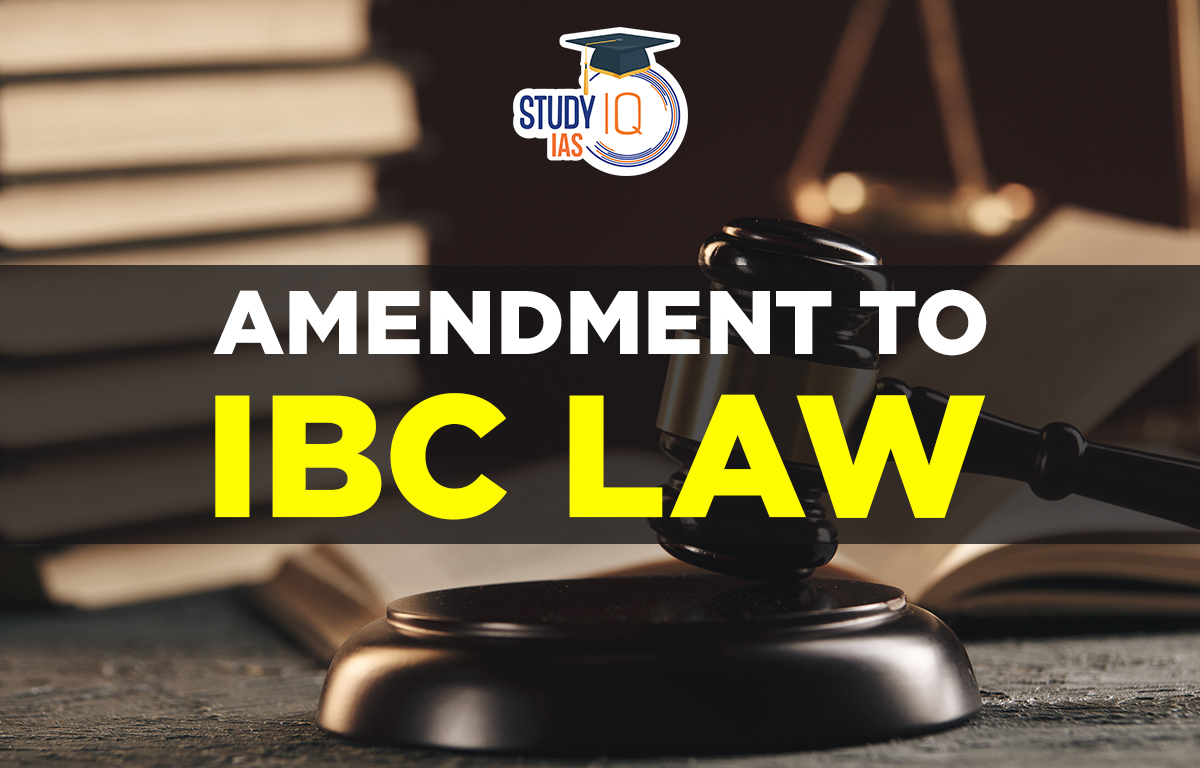Table of Contents
In News: Amendments have been proposed by the government to improve the Insolvency and Bankruptcy Code (IBC).
About Insolvency and Bankruptcy Code (IBC), 2016
- IBC enables the resolution of stressed assets in a market-linked and time-bound manner.
- Objectives of IBC:
- To expedite and simplify the process of bankruptcy proceedings, ensuring fair negotiations between the borrower and creditors.
- To save a business through restructuring, change in ownership, mergers and other methods.
- To maximize the value of assets of the corporate debtor.
- To promote entrepreneurship, availability of credit, and balancing the interests.
- Two outcomes of IBC:
- All attempts are made to resolve the insolvency by either coming up with a restructuring or new ownership plan and if resolution attempts fail, the company’s assets are liquidated.

Highlights of Proposed Amendment
- Enhance efficiency: It aims to enhance the efficiency of the bankruptcy process and expand the scope of the framework.
- There were concerns regarding the misuse of initiation of the individual insolvency resolution process by personal guarantors to take advantage of the interim moratorium
- Appointing Common Resolution Professional: For better coordination between the insolvency resolution of individual insolvency of personal guarantors and the corporate insolvency.
- Compulsory Admission: A tribunal has to admit an insolvency application if default is established.
- This resolves confusion stemming from a recent Supreme Court order that allowed tribunals the discretion to reject applications.
- Competing Bids: Creditors will have to weigh competing resolution plans through a special challenge mechanism.
- This aims to deter higher bids that come in late in the process and trigger litigation delays.
- Real Estate Resolution: If a developer has defaulted, only impacted projects can be pushed into insolvency, which allows the main company to continue work on its other projects.
- Piecemeal Resolution: Assets of a corporate debtor may be resolved separately from the company as long as one plan provides for resolution of the debtor as a going concern.
- Hierarchy of Creditors: Changes to the hierarchy in which creditors are repaid. The waterfall mechanism will benefit unsecured creditors and government dues.
- Powers to appoint an administrator: Central government can appoint an administrator in insolvency cases involving public interest, which would enhance its powers.
- State-of-the-art electronic platform: To handle several processes under the Code with minimum human interface.
- Redesigning Fast-Track Corporate Insolvency Resolution Process (FIRP): To allow financial creditors to drive the insolvency resolution process for Corporate Debtors outside of the judicial process while retaining some involvement of the Adjudicating Authority (AA).
- It may help in quicker disposal of the CIRP (Corporate Insolvency Resolution Process).
- Other Changes: Extend pre-packaged insolvency processes to larger companies, tighten recovery from personal guarantors and make failures to comply with the bankruptcy code civil violations rather than criminal offenses.


 Daily Quiz 14 April 2025
Daily Quiz 14 April 2025
 UPSC Syllabus 2025, Check UPSC CSE Sylla...
UPSC Syllabus 2025, Check UPSC CSE Sylla...
 EU Plans to Slash General Data Protectio...
EU Plans to Slash General Data Protectio...





















